Custom Metal Fabrication: Your Custom Metal Parts Specialist
This post provides you with a comprehensive guide to custom metal fabrication, covering all the essential information. From the definition, types, and applications of custom metal fabrication to the available surface finishing options. This guide will also help you with every facet of manufacturing metal parts. By the time it’s over, you’ll know more about this important procedure and be able to make wise decisions.
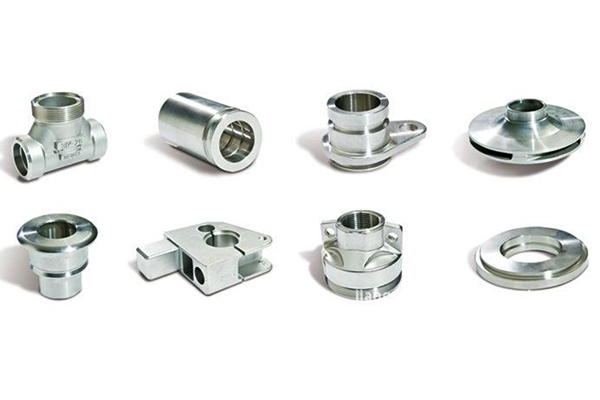
What is Custom Metal Fabrication?
Custom metal fabrication encompasses a wide range of processes involved in the manufacturing of metal parts, including bending, cutting, assembling, shaping, or molding metals to achieve a desired structure. This value-addition process involves creating parts, machines, and various structures from raw materials.
In custom metal fabrication, the end product is not assembled from ready-made components; instead, it is fabricated directly from raw or semi-raw materials. This custom metal fabrication process utilizes sheets, rods, billets, and bars of stock metal to produce the final metal parts.
Types of Metal Materials
In our daily lives, we encounter numerous types of metals, each falling into one of two categories. Let’s explore both of these categories.
Hard Metals:
This category comprises metals with a matrix that incorporates hard materials, rendering them tougher than alloys, pure metals, or hardened steel. Although hard metals are more rigid, they are also relatively brittle. They find applications in the production of cutting tools such as drills, milling cutters, and chisels. Additionally, punching and forming tools can be made from hard metals. These materials exhibit significantly higher temperature resistance compared to other metals. Examples of hard metals include tungsten, steel, titanium, and chromium.
Soft Metals:
This special class of metal materials is characterized by low hardness. Soft metals serve as surface engineering materials and can function as solid lubricants in rolling and sliding applications. They reduce friction in mechanical components, enhancing anti-wear capabilities and extending equipment service life. Examples of soft metals include gold, lead, silver, thorium, magnesium, zinc, tin, aluminum, copper, brass, and bronze.
Processes of Custom Metal Fabrication
The process of custom metal fabrication varies significantly based on the type of metal involved, with each method possessing unique strengths and compatibilities. To provide a comprehensive understanding of the diverse production methods and assist in making informed decisions, we present an overview of custom metal fabrication processes below.
CNC Machining: Precision Material Removal
CNC machining, a computer-controlled manufacturing process, involves shaping raw material by removing excess material. Precision CNC machining offers various operations, allowing selection based on the complexity and desired surface texture. This method is optimal for low to medium complexity and volume in metal part manufacturing.
CNC machining is widely adopted across industries, with two primary categories: CNC turning and milling.
In milling, a multi-point cutting tool removes unwanted material from the metal stock (workpiece), achieving the desired shape through the rotational movement of the cutter. Conversely, CNC turning employs a single cutting edge to remove excess metal from a rotating workpiece, creating cylindrical structures in metal parts. The workpiece’s rotation is synchronized with the movement of the cutting tool along a parallel axis.
Applications of CNC Machined Metal Parts:
CNC-turned and milled metal parts are integral to various industries. These components serve as essential elements in modern manufacturing. CNC turning is instrumental in producing components for the automotive, telecommunication, electrical, machinery, and electronics sectors. Examples include bushings, shafts, pins, rods, gearboxes, and heads.
CNC milling, another widely used machining operation, finds applications in aerospace structures, automotive models, medical components, and virtually any imaginable metal part.
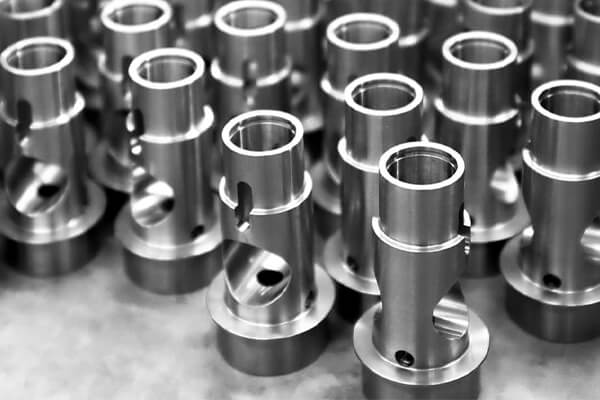
Extrusion: Shaping Metals Through Die Compression
This method entails forcing heated metal into a die, which shapes it into a tube or L-shape. Extrusion allows for the formation of more intricate metal structures. Parts produced through extrusion often undergo post-finishing processes like drilling, cutting, and machining. It is particularly well-suited for applications requiring consistent cross-sections. Hot extrusion is employed for creating larger and highly complex parts, whereas cold extrusion is used for smaller parts with lower complexity.
During extrusion, a cylindrical bullet is compelled to flow through a closed cavity, forming a die with the desired cross-section. The die profiles the metal parts and expels them using a hydraulic or mechanical press, resulting in the desired shape.
Extrusion encompasses three distinct operation types: hot extrusion, cold extrusion, and friction extrusion. Hot extrusion is conducted at high temperatures to prevent material hardening. Cold extrusion, carried out at room temperature, offers advantages such as reduced oxidation, closer tolerance, and increased strength. Friction extrusion involves applying force to push the charge against the die.
Applications of Extruded Metal Parts:
Extrusion yields metal parts with smooth surfaces, making it ideal for cosmetic and precision components. Industries such as aerospace and automotive utilize this process for manufacturing various components. Additionally, extrusion finds applications in windows, railing, and flooring, providing a versatile solution for diverse manufacturing needs.
Stamping: Precision Cutting and Bending of Parts
The stamping process is capable of shaping metal sheets by creating various forms, images, and letters. Hydraulic and mechanical presses represent two primary types of stamping, employing bending, punching, and cutting techniques to mold the metal sheet into the desired configuration. This method allows for the transformation of sheets with a thickness of ¼ into specific sizes and shapes. Stamping operations encompass blanking, metal coining, and four-slide forming, offering scalability for high volumes and complexity while maintaining low unit costs.
The sheet metal fabrication process through stamping includes various techniques such as punching, bending, embossing, coining, and flanging. It can range from a single-stage operation, where the metal is pressed to achieve the desired form on the sheet, to a multiple-stage operation. Stamping typically utilizes a cold metal sheet.
Applications of Stamped Metal Parts:
Stamping is a pivotal process in the manufacturing of millions of parts annually, particularly in the electronic, appliance, and automotive industries. This method excels in producing high-volume functional components like enclosures, brackets, and chassis. It also proves to be an optimal choice for the robotics industry.
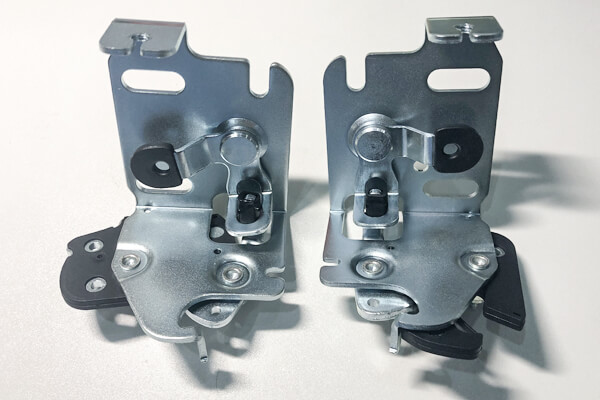
Forging: Reshaping Metal through Compression Forces
Forging is a manufacturing process that utilizes localized compression forces to shape metal, involving the heating and shaping of metals. Widely adopted in automated industrial settings, this process accommodates forgeable parts ranging from kilograms to a hundred metric tons. Modern industries leverage high-impact forge machines to craft metals into desired structures, yielding components with greater strength compared to those produced through casting and machining. Notably economical, forging generates less waste.
The forging process follows a straightforward sequence of five steps: heating, performing, forging, cooling, and finishing. Unlike processes requiring metal reduction in liquid form, forging achieves strength by heating the metal to a malleable state. This characteristic contributes to the production of robust metal parts.
Applications of Forged Metal Parts:
Forged metal components find extensive applications across global industries. In the automotive sector, these components are integral for shock and stress applications, including wheel spindles, kingpins, shafts, and torsion balls. Moreover, forged parts play crucial roles in surgical tools, electrical transmission, domestic hardware, and various general industrial equipment.
Casting: Traditional Metal Fabrication Technique
Casting stands out as one of the most versatile processes for custom metal fabrication, particularly for creating complex-shaped structures. It serves as an economical solution to custom metal fabrication challenges that might otherwise require multiple methods to address. The casting process involves pouring liquid material into a prebuilt mold, which is a hollow cavity designed to match the desired structure. Subsequently, the material cools and solidifies before being ejected from the mold, resulting in the cast metal part.
Two prominent casting methods are commonly employed, each offering distinct advantages:
Investment Casting: This method utilizes a wax model of the final product. The wax is coated with ceramic, forming a hardened shell that becomes the mold for the desired metal part once the wax is heated and drained out. Investment casting is well-suited for producing detailed and complex parts, catering to small production needs.
Die Casting: In this process, liquid metal is forcefully injected into a mold using hydraulic pressure. The steel molds are crafted to produce intricate shapes, ensuring repeatability, accuracy, and efficiency. Die casting is particularly suitable for large production runs of small to medium-sized castings with high complexity.
Applications of Cast Metal Parts:
Casting is integral to the manufacturing of nearly all commercially produced mechanical devices in contemporary times. In terms of production, casting surpasses CNC machining in cost and efficiency. This method of custom metal fabrication is regularly employed in the manufacturing of washing machines, metal pipes, and automotive components.
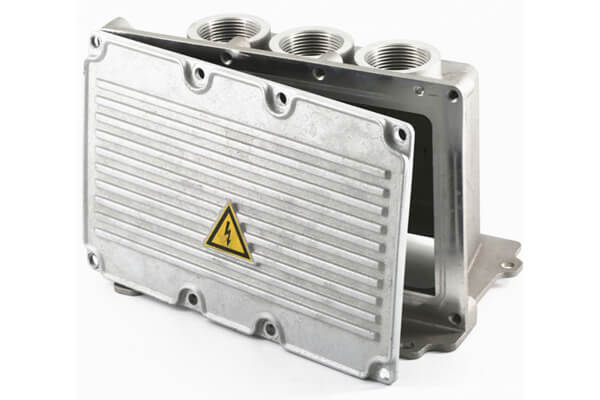
Metal Injection Molding: Efficient High-Volume Production
In metal injection molding, finely powdered metal is combined with a binder material to create feedstock, which is then solidified and shaped into the final product. This method is particularly well-suited for large-volume production, offering a cost-effective solution that might otherwise be prohibitively expensive with alternative manufacturing methods.
Distinguished from die casting, metal injection molding involves the use of a polymer-metal mix as a feed. The initial step involves creating a mixture of metal and polymer, followed by melting and injecting the powder feedstock into a mold. The material then cools and solidifies, taking the mold’s shape. In the final step, the molded part is ejected from the mold and cleaned.
Applications of Injection Molded Metal Parts:
Metal injection molding represents an innovative technology in custom metal fabrication, capable of producing complex parts in large quantities with consistency. The automotive industry extensively utilizes this technique for various components. Moreover, metal injection molding contributes to the production of airplane parts, medical equipment, fittings, ornaments, computer components, office products, and components for home appliances.
Note: In the manufacturing of medical devices, the plastic injection molding technique is also an incredibly effective method.
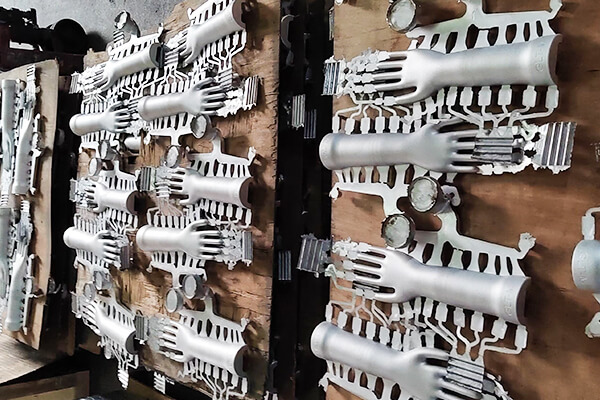
Metal 3D Printing: Precision for Complex Shapes and Limited Production
Metal 3D printing utilizes laser technology to fabricate metal parts, commonly employed in prototypes and as an alternative for low-volume casting. This method is particularly well-suited for highly complex, low-volume parts, offering advantages such as reduced costs and shorter lead times. Metal 3D printing is recognized for its capacity to produce all-in-one assemblies and intricate geometries, including areas that are challenging or impossible to achieve with standard tooling.
During this process, metallic particles are incrementally 3D printed. In metal 3D printing, the operation chamber is filled with inert gas (e.g., argon) to minimize the oxidation of the metal powder, and then heated. Subsequently, a thin layer of metal powder is spread over the build platform, and a laser scans the cross-section of the components, fusing the metal particles to create a layer. This scanning process is repeated until the entire model is covered, resulting in a fully solid part. The final metal 3D printed part is now ready for use.
Applications of 3D Printed Metal Parts:
Metal 3D printing facilitates the quick and cost-effective manufacturing of various industrial parts. Notably, it excels in mass-producing custom tools and low-volume production of specialized instruments. This technique proves valuable for creating fully functional prototypes, sturdy housings, ductwork, spare parts, production tools, surgical and dental implants, as well as jewelry, decorative items, and various components across diverse modern industries.
Options for Finishing Metal Parts’ Surfaces
Surface finishing marks the final stage in the custom metal fabrication process, enhancing both the environmental protection and aesthetics of metal fabricated parts. Beyond the capabilities of machining operations, this process improves features such as surface roughness and corrosion resistance. Additionally, certain treatments have the potential to augment the mechanical and electrical properties of metal parts.
Listed below are some surface finishing options for metal parts:
- Electroplating
- Electroless Plating
- Anodic Oxidation
- Chemical Treatment
- Vacuum Plating
- Hot Dipping
- Painting
- Thermal Spraying
Custom Metal Fabrication Services
We are a skilled Chinese manufacturer of custom metal fabrication equipped with cutting-edge machinery. We constantly bring fresh concepts and advancements to support you in the production of your unique metal components. In addition, we are proud to inform you that we offer flawless manufacturing and prototyping services that have produced metal parts for customers all over the world. Furthermore, we offer premium metal parts at affordable prices, regardless of the size of the manufacturing project.
Furthermore, the seasoned engineers on our team are a prime example of how intelligence and experience go hand in hand. We have dedicated our time to this manufacturing process and have become experts in custom metal fabrication.
Please get in touch with us right away if you’re looking for custom metal fabrication services.
Get a free quote and design analysis today.
We’ll reply to you within 6 working hours.
We respect your privacy.
+86 139 2927 4777 (WhatsApp, Wechat)
